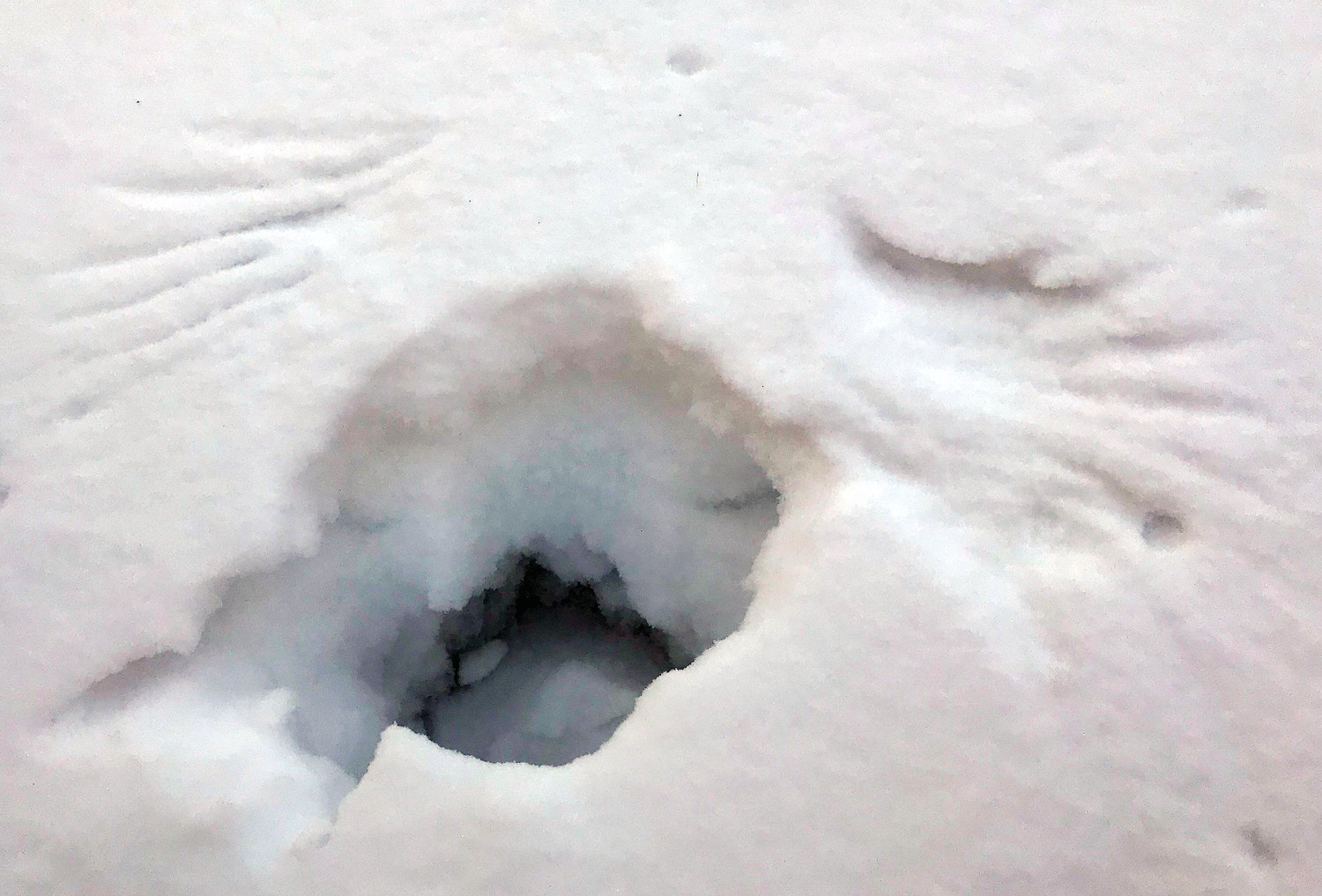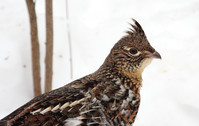Support the Timberjay by making a donation.
Ruffed grouse in winter
Adaptations make this species well-equipped for the North Country
Winter presents a wide range of challenges to the wild creatures that spend the cold season here in the North Country, and virtually every one has a few adaptations that allow them to survive. The …
This item is available in full to subscribers.
Attention subscribers
To continue reading, you will need to either log in to your subscriber account, or purchase a new subscription.
If you are a current print subscriber, you can set up a free website account and connect your subscription to it by clicking here.
If you are a digital subscriber with an active, online-only subscription then you already have an account here. Just reset your password if you've not yet logged in to your account on this new site.
Otherwise, click here to view your options for subscribing.
Please log in to continue |
Ruffed grouse in winter
Adaptations make this species well-equipped for the North Country
Winter presents a wide range of challenges to the wild creatures that spend the cold season here in the North Country, and virtually every one has a few adaptations that allow them to survive. The ruffed grouse has more than most, and that’s one reason that it has been so successful in our region over the years.
Among the two biggest challenges that wild creatures face here in winter are access to food, and avoiding freezing to death, particularly when the thermometer drops well below zero, which is commonplace. The ruffed grouse has made both physical and behavioral adaptations that address both of these major challenges.
Perhaps the most dramatic are the physical changes, even though they might not be all that evident at first glance. Like most birds, of course, ruffed grouse add more downy feathers in winter, which help them retain body heat. They also grow feathers around their nostrils, which presumably help to temper the air that they breathe, preventing the internal chill that can come from breathing intensely cold air.
The most significant change is an expansion of an offshoot of their intestines, that acts in much the same way as the rumen in herbivorous mammals. The so-called caeca enlarges in winter and stores bacteria that produce enzymes that help the ruffed grouse digest their winter diet, which is dominated by aspen buds and the catkins of birch and alder. Such foods are made up mostly of cellulose, which is indigestible in the absence of these helpful bacteria and the cellulose-digesting enzymes they produce.
Outside of winter, grouse enjoy a somewhat more digestible diet, that includes insects, berries, seeds, and some favored vegetation, like clover. During warmer periods, the grouse’s caeca diminishes in size and importance, only to expand when winter rolls around again.
Grouse also grow tiny comb-like appendages on their feet, which researchers can only speculate about. Some have suggested the appendages, known as pectinations, serve the same purpose as snowshoes by giving their feet more surface area on the snow. Others have speculated that they help grouse better grip icy branches as they feed at the tips of branches in winter. These pectinations develop in the fall, and most grouse hunters are familiar with these comb-like structures that grow on either side of a grouse’s three front toes. They fall off by late winter or spring, only to grow again, usually starting in September.
One of the more unique behavioral changes that we recognize in ruffed grouse is their habit of plunging head first into the snow to roost. Grouse invariably do this from the air, so their tracks don’t attract hungry predators. By roosting in such a way, the grouse take advantage of the incredible insulating quality of snow. Within their own snow cave, the temperature rarely dips below 20 degrees, even when the outside air temperature is as much as 40 below.
Of course, the ruffed grouse can only take advantage of this practice when the snow is powdery, and at least a foot deep. With our increasingly erratic winters, our periods with deep powder snow seem to be diminishing and that could reduce the number of winter nights that grouse can benefit from this behavior.
It’s one behavior that many of us who spend time in the winter woods have experienced close-up, when we’re snowshoeing or skiing along and suddenly the snow explodes near the trail as a grouse emerges in a panic. That’s guaranteed to give anyone a fright!
The ruffed grouse has historically done well here in the North Country, thanks to these adaptations, which allow these birds to thrive from the Upper Midwest all the way up into the interior of Alaska. This is a cold weather species, that thrives in the kind of conditions that send most other birds far to our south when winter arrives.









